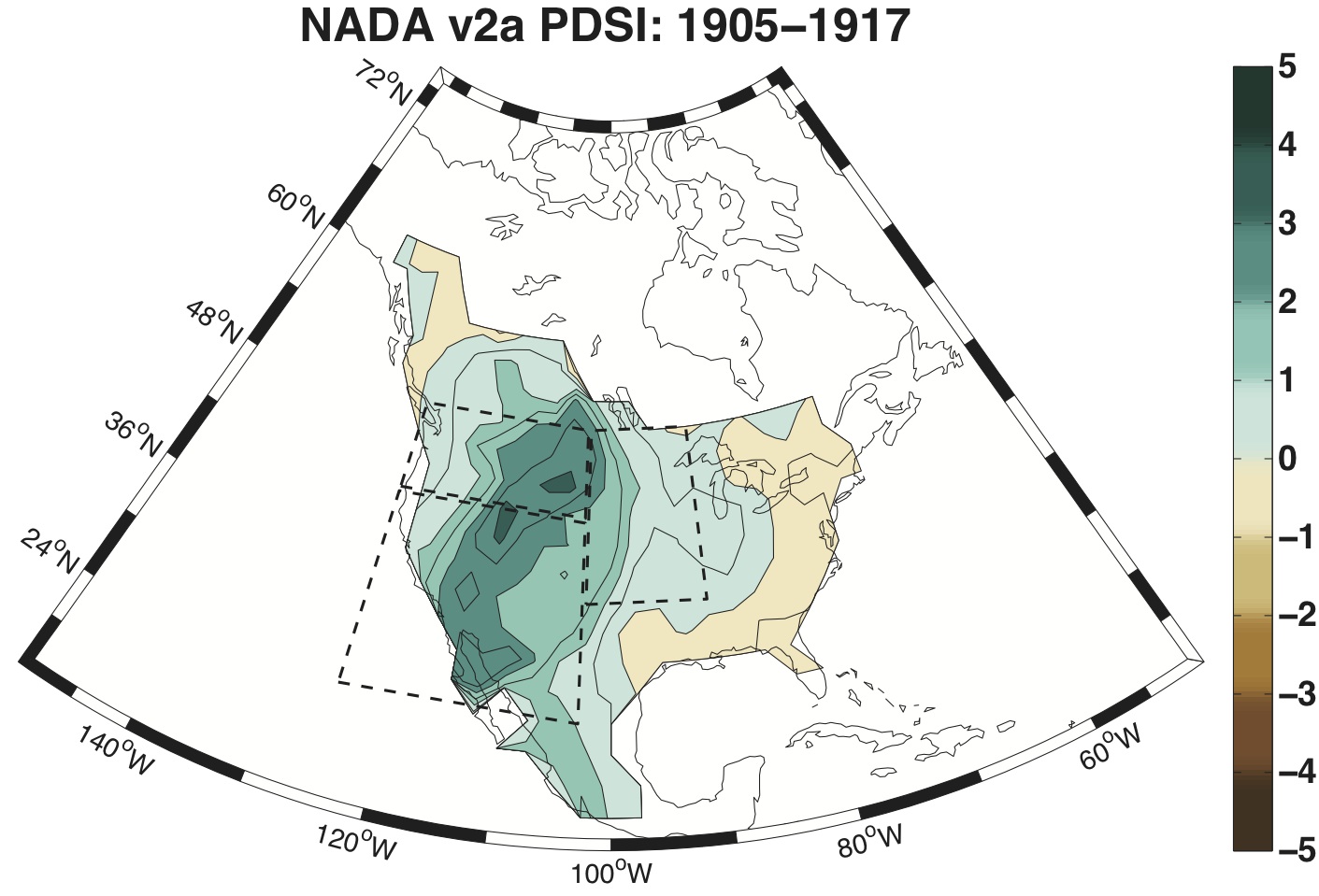|
Causes and Dynamics of the early 20th Century North American Pluvial Here we have attempted to determine what caused the pluvial. First of all according to the Palmer Drought Severity Index moist conditions extended from central Mexico into Canada and from the Pacific coast to the eastern Plains. Tree ring records also show that the Pluvial was the wettest extended period across the West in the last several centuries, a truly unique event! You might think that, since the major droughts in SW N. America and the Plains are forced by La Niña conditions, that El Niño conditions prevailed during the Pluvial. However SST anomalies, in both the tropical Pacific and Atlantic Oceans were quite unremarkable: there were a couple of decent sized El Niños but also a La Niña in the middle of the Pluvial. In the work we were able to show that the Pluvial was the result of a regionally varying mix of temperature and precipitation anomalies. Across the region cold temperature anomalies reduced evapotranspiration and increased moisture in soils and rivers. In the SW and central Plains there was also an increase in precipitation in winter. An examination of the atmospheric circulation anomalies at the time using the 20th Century Reanalysis shows strong southwesterly flow into the southwest in winter (akin to a 'pineapple express' circulation mode) but no clear and strong links to typical SST-forced modes. As such it is little surprise that GCM simulations forced by historical SST anomalies do not do a good job simulating the Pluvial. A main research question is what caused the cool anomalies during the Pluvial that were critical to its creation. The evidence is that the late 19th Century was warmer so these did not arise from secular warming but from a cold oscillation that also appears in hemispheric mean temperature anomalies. However, since warming in the West is proceeding and strong we can be sure that moist conditions like those during the Pluvial, and associated high river flows, will not return any time soon in the future. The paper by B. Cook et al. describing these results has been published to Journal of Climate and is here. REFERENCES
|
